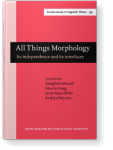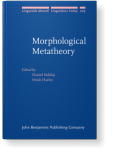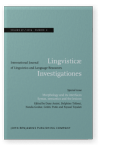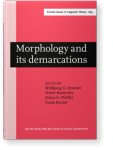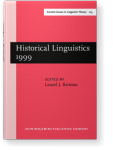Gregory T. Stump
List of John Benjamins publications for which Gregory T. Stump plays a role.
Articles
2021 Chapter 14. Conditional exponence All Things Morphology: Its independence and its interfaces, Moradi, Sedigheh, Marcia Haag, Janie Rees-Miller and Andrija Petrovic (eds.), pp. 255–278 | Chapter
In inferential-realizational theories of morphology, the content realized by the application of a rule of exponence is customarily assumed to be invariant across the range of contexts in which that rule applies. Yet, there are morphomic exponents whose content is sensitive to context; Breton verb… read more
2016 Paradigms at the interface of a lexeme’s syntax and semantics with its inflectional morphology Morphological Metatheory, Siddiqi, Daniel and Heidi Harley (eds.), pp. 27–58 | Article
The interface of a language’s syntax and semantics with its inflectional morphology is quite constrained: canonically, the morphosyntactic property set that determines a word form’s use and interpretation in a particular syntactic context also determines its inflectional shape in that context.… read more
2014 Morphosyntactic property sets at the interface of inflectional morphology, syntax and semantics Morphology and its interfaces: Syntax, semantics and the lexicon, Amiot, Dany, Delphine Tribout, Natalia Grabar, Cédric Patin and Fayssal Tayalati (eds.), pp. 290–305 | Article
The morphosyntactic property set associated with the syntactic node occupied by a word form is not invariably identical to the property set determining that word form’s inflection, as evidence from Bhojpuri, Turkish, Sanskrit and Hua shows. The difference between syntactic property sets and their… read more
2005 Delineating the Boundary between Inflection-class Marking and Derivational Marking: The Case of Sanskrit -aya Morphology and its demarcations: Selected papers from the 11th Morphology meeting, Vienna, February 2004, Dressler, Wolfgang U., Dieter Kastovsky, Oskar E. Pfeiffer and Franz Rainer (eds.), pp. 293–309 | Article
2001 Default inheritance hierarchies and the evolution of inflectional classes Historical Linguistics 1999: Selected papers from the 14th International Conference on Historical Linguistics, Vancouver, 9–13 August 1999, Brinton, Laurel J. (ed.), pp. 293–307 | Article
